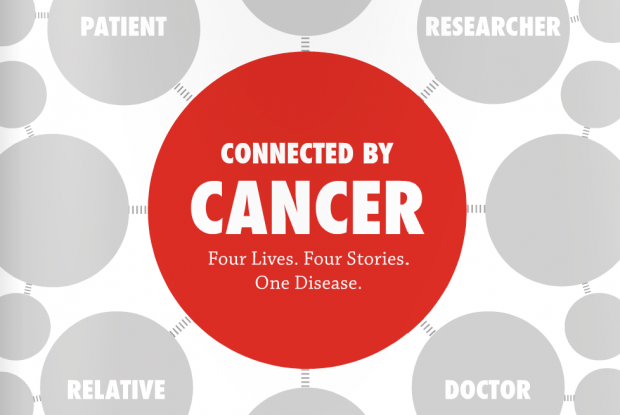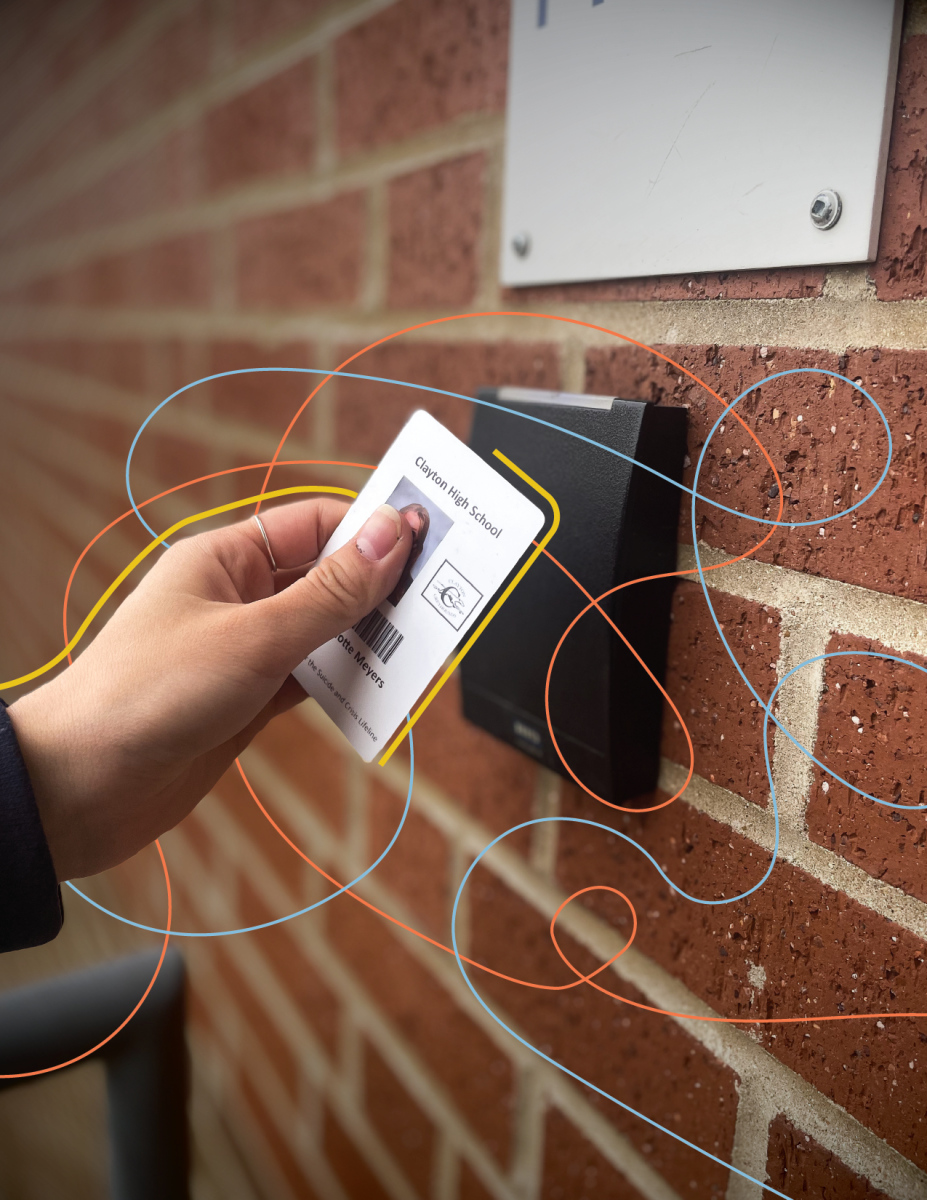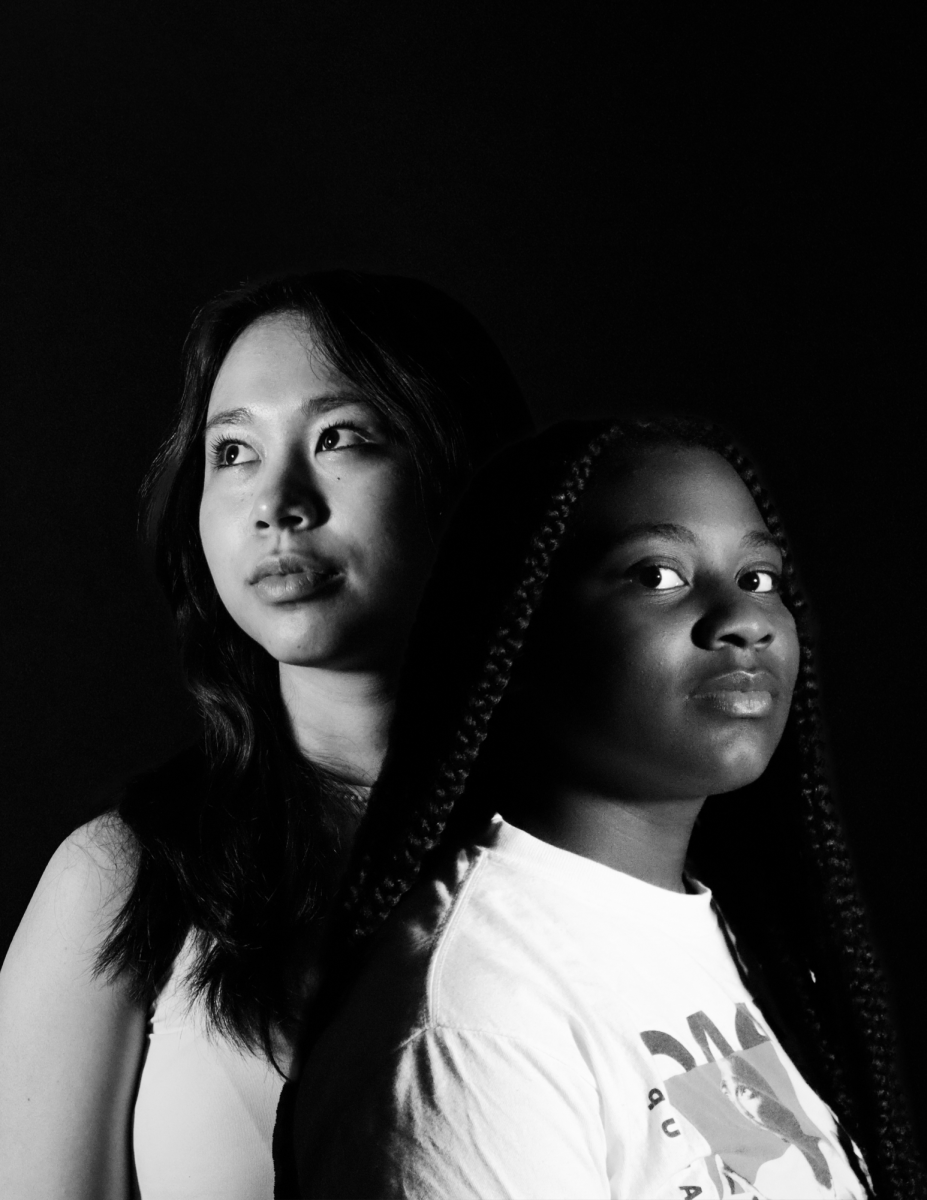
The medical definition of cancer is the unchecked growth of cells.  But that’s not saying very much.  In truth, medical characteristics make up only part of the disease.  Cancer manifests itself not as simply a diagnosis, but a personal struggle, a career, a life-altering obstacle, a passion.  The real definition of cancer lies in the impact it has on people’s lives, not the cells it proliferates.
For Paul Keller, the father of senior Zoe Keller, the word has taken on far greater meaning than he would have ever expected after he was diagnosed with melanoma. Â He enjoys each day as if it were his last, uncertain yet optimistic for his future.
Gerald Linette, an oncologist at Washington University, sees people like Keller everyday. Â Linette works tirelessly to develop new medicines and treatments for patients with malignant brain tumors and melanoma. Â Patients like Keller are who inspire him to push past any setbacks in the hope of progress.
For Alice Fasman, the CHS Choir teacher, cancer has become an integral part of her life since her husband was diagnosed with it almost a year ago.  She’s amazed to see how he, along with other cancer patients, continues to persevere in his fight against cancer.
Julie Margenthaler, a surgeon at Washington University, shares Fasman’s admiration.  She consults with and operates on breast cancer patients, for some of whom she will be the first to give the devastating diagnosis.
These are four different people, four different lives, but they all share a common thread. Â All of these people: cancer patients, their relatives, oncologists, and cancer researchers are connected by their fight to overcome cancer.
Cancer Patient: Paul Keller
Sunscreen.  Today, it’s an essential health product for protection against harmful UV rays.  However, for Paul Keller, as a child in the 1960’s growing up in Clayton, he had never even heard of sunscreen.  He was a normal kid who played tennis, went on canoe trips, and hung out at the pool in the summer.  At the time, the frequent sunburn of his fair skin was of no major concern.  Unfortunately, years later, these simple sunburns would forever impact his life.
“I was a typical fair skinned kid who got lots of bad sunburns and that’s probably why I have melanoma now,†Keller said. “Now we know about the danger of too much sun, and we can avoid exposing ourselves to it. Kids that sit out in the sun, or go to tanning beds are crazy and asking for trouble later in life.â€
Last February, Keller was diagnosed with Metastic Melanoma of Unknown Primary Source. Â Most cases of melanoma usually begin on the surface of the skin as to be visible to the naked eye; however, for Keller, the cancer originated somewhere within his body, preventing him from catching the cancer early in development.
“The first sign of trouble for me was a bruise that suddenly appeared under my left armpit,†Keller said. “A scan revealed an unusual mass, which was not supposed to be there. I had it removed immediately in surgery. Once they tested it, they knew it was some form of cancer, but did not know what kind.â€
For days and weeks on end, Keller waited anxiously to hear back more results from his doctors.
“A cancer diagnosis is especially scary in the beginning, because they often don’t know very much until more tests are completed,†Keller said.  “That was a stressful period. The results are hard to understand because they are written in medical terminology and, as a patient, it’s hard to know what it all really means. I spent a lot of time on the Internet trying to figure out what it all meant. It was hard to concentrate at work or go to sleep at night. After a while, I became more comfortable with my situation just because I understood it better.â€
Over the following months, Keller had two major surgeries in addition to radiation treatment. Â Although the treatments and drugs have left him weaker, Keller continues to strive to do what he loves in life.
“It has slowed me down and the drugs tend to make me tired,†Keller said.  “But I try to make sure I still do things I enjoy and I don’t let the disease dictate how I live. I am still going to work, enjoy being with my friends and family, and I’m still doing many of the things I always used to do. I try to view my physical limitations as an interesting challenge, not as something that stops me from pursuing things I enjoy.â€
Today, Keller maintains a Grateful Log to record valuable memories as to not forget the special moments of his life.
“I have a great life and a great family and cancer doesn’t change that one tiny bit,†Keller said.  “I have already done almost everything I ever wanted to do so I’m extremely lucky. Cancer can’t take any of that away. I am grateful that I live during a time when medicine is advancing quickly and I am still optimistic that I can beat this. The drugs I’m taking today were not available a year ago – that’s how quick it’s all changing.â€
Recently, Keller began taking a new and promising drug for treating his melanoma. Â Although the drug has shown positive signs of improvement, Keller continues to recognize the importance of his loving family in fighting this cancer.
“I am incredibly lucky to be surrounded by so much love and support,†Keller said.  “This would be very difficult to go through alone.â€
Researcher: Gerald Linette
When most people receive a prescription, they simply take the medicine and wait for the magical results to manifest, which, more than not, they do. Â Though modern science has brought about this miraculous form of treatment, it has also obscured those behind these advances, the magic-makers like Dr. Gerald Linette.
Linette is a senior oncologist and faculty member at Washington University in St. Louis. Â Though Linette sees and treats cancer patients regularly, he also works in clinical trials, testing new cancer and drug therapies on patients for pharmaceutical companies.
“There are two different types of research that we are involved in,†Linette said.  “The first is clinical trials and development of new medications for patients with advanced melanoma.  We’re also involved in the testing of new medications for patients with malignant brain tumors.â€
The field of medical oncology has opened up a wide range of opportunities for Linette. Â Pharmaceutical companies that have gone through the preliminary stages of development for a new medicine recruit Linette to conduct clinical trials on patients.
After he has been recruited, Linette’s job is to find patients for the trials.  These patients come in the form of referrals, often by physicians who find that currently available medicine is no longer helping a certain patient, and by Linette’s recruitment of his own patients.  Despite the seemingly sluggish pace of clinical trials, Linette remains committed to his work.
“Most new medicines are developed through clinical research in a very deliberate manner; it takes a long time to develop,†Linette said.  “This is how progress is made in a field like oncology.â€
Indeed, Linette’s persistence has resulted in some notable achievements.  Just this year, two new medicines that he tested in clinical trials were approved for the treatment of melanoma.
“We have patients that participated in this clinical trial, that took a chance and needed to receive additional treatment, that are still alive now because they responded to the therapy,†Linette said.
These great successes give additional value to a decade of work that Linette has dedicated to testing new treatments.  However, success is not the only motivation for his commitment.  Linette’s main drive comes from his desire to help his patients.
“Everything in oncology is personal on a certain level,†Linette said.  “We deeply care for the patients that come to us hoping to get better, and when a new medicine doesn’t work and a patient gets sick and dies of their disease, it’s always difficult for everyone.  It’s something that we do take very personally, but part of each patient’s care is learning something so that we can help future patients.  Through the efforts of patients that we’ve treated in the past, we’re now finally making progress.â€
Progress has certainly been achieved through Linette’s work, but he has no plans for slowing down in the immediate future.  For Linette, progress is not measured by large benchmarks, but by continued and constant development.  For this reason, Linette is optimistic that a cure looms somewhere in the future.
“I believe that by continued investment and research, someday we will have the answer to this disease,†Linette said.
Relative: Alice Fasman
Each morning, Alice Fasman enters her Choir class at CHS beaming with optimism for the day ahead. Â For her students, she is a radiant source of energy, laughter, and passion for music. Â Her bright attitude towards life has never changed even in the face of the difficult journey she has had since her husband was diagnosed with cancer almost a year ago.
Fasman was at the state music educator’s conference when she received a devestating phone call from her husband, Mark.  He had received a report from his doctor that he had stage four Lymphoma cancer.  The news came as a complete shock to both of them.  He was asymptomatic.  Tears crowded her eyes as she drove back to St. Louis.
“I just couldn’t think it could be possible,†Fasman said.  “I think that when they say denial is one of the first responses, it absolutely is.  I thought there must be something wrong.  It just couldn’t happen to us.â€
Denial was followed by incredible sadness.  Questions whirled through Fasman’s mind as she pondered, “What’s going to happen to him?  What’s going to happen to us? How is this going to change our lives?â€
The next week her husband began receiving treatments and chemotherapy.  For three days every month for six months, he stayed in the hospital for upwards of three to six hours while he was hooked up to an IV and infused with chemicals – “his poisons†– to fight off his cancer.  Fasman watched these poisons slowly exhaust and debilitate him.
As a Rabbi, Fasman’s husband had to limit his time with his congregation, missing some Shabbats and religious holidays.  To make matters worse, at the beginning of his chemotherapy, he led a funeral service for a man who had died from the same type of cancer he had after not responding to the treatments.
“Mark saw that at the beginning, and was there with the family when the doctor [told them] there was nothing more we can do,†Fasman said.  “So, we thought that was something we could be facing.â€
Fortunately, following a series of chemotherapy treatments, the Rabbi’s cancer went into remission.  He still suffered, however, from a significant decrease in white blood cells and a weakened immune system.  Even worse, he experienced a few serious allergic reactions upon receiving transfusions of these needed red blood cells or platelets.
“The greatest challenge is that there are a lot of things that you cannot do: you can’t help them, you can’t make them feel better, and you can’t make him live any longer,†Fasman said.  “So much of it is out of your control.â€
Despite the fact that his cancer is currently in remission, Fasman’s husband still faces the likelihood of the cancer returning in the next eight to 10 years.
“I don’t know what the future is with Mark,†Fasman said.  “There are statistics about how many years one lives with this condition; but the fact of the matter is that nobody knows.  I just find it really difficult to face the awfulness of what this could be and I cannot dwell on that all the time because I don’t think I would be able to function.  So you must take each day at a time and enjoy your family, your job, and home, and all the people around you and all your blessings in life.â€
In the end, Fasman remains optimistic for her husband’s future. The smile has never faded from her face and she continues to embrace each new day with a positive attitude.
“I want to be strong for Mark,†Fasman said.  “He may live a shorter life span, but I can’t dwell on that.  We have to make each day what it is.â€
Surgeon: Julie Margenthaler
Doctor Julie Margenthaler starts her day at 7 a.m. sharp.  If she’s in clinic, which she is two days a week, she will see around 45 breast cancer patients in the next 10 hours.  If she’s in surgery, she will operate on six to 10 women in separate surgeries.  All in a days work, she heads home at 5 p.m., only to wake up the morning and begin again.
Margenthaler is an associate professor of surgery at Washington University School of Medicine and a breast surgeon at Siteman Cancer Center. Â She has been in practice for six years, meeting with breast cancer patients in clinic and performing surgical operations according to the needs of her patients.
In clinic, Margenthaler familiarizes patients with what they should expect over the course of their treatment. Â For most women, that consists of a combination of surgery, chemotherapy or an anti-estrogen, and radiation.
Aside from the general discussion, Margenthaler must also address specific patient concerns. Â For patients with genetic problems, a genetic counselor becomes involved. Â For young women looking to become pregnant, a fertility counselor becomes involved. Â For the many patients who experience psychological stress because of the weight of their diagnosis, a psychologist is made available.
“As the breast surgeon, you’re the coordinating person,†Margenthaler said.  “You need to make sure you take care of the surgical problem, but you also need to make sure you get all the people involved that play a part in their treatment.â€
Though this intense coordination is indeed difficult, arguably the hardest part of Margenthaler’s job lies in the conversation that precedes the discussion of additional care.
“I see both patients who have been diagnosed and who have not,†Margenthaler said.  “I would say about 70 percent of patients have already gotten their diagnosis.  Usually what happens is they have a mammogram, have a biopsy, then get the diagnosis and come see me.  About 30 percent of [patients] come in with a symptom like a lump and I am the one making the diagnosis.â€
Margenthaler must tell give the devastating breast cancer diagnosis to around 14 patients each day.
“I’m going to be very direct and tell them what I’m thinking so they don’t have to wonder,†Margenthaler said.  “I try to communicate with them, make sure their family’s with them if possible, and always emphasize that even though it is breast cancer, we have great treatments and we can cure it.â€
Despite the overwhelming difficulty of her task, Margenthaler’s direct approach and optimism proves effective.  For those with less promising diagnoses, however, Margenthaler’s job becomes different altogether.
“Once you realize you can no longer cure the breast cancer, then you have to switch your focus to understanding what her priorities are, what quality of life she wants to have, and what side effects of the treatments would affect that quality of life,†Margenthaler said.  “The focus becomes controlling pain, treating what you can, and using services like hospice.â€
These kinds of diagnoses impact both surgeon and patient.
“It’s a very emotional time when you can’t offer anything else to the patient; you have to handle it differently for each individual patient,†Margenthaler said.
This emotional hardship continues through the long-term relationship inherent between breast surgeons and their patients.  As breast cancer is known for recurring, most of Margenthaler’s patients are destined to be her patients for the rest of their lives.
“As a surgeon, I think you have a unique relationship with any patient you come in contact with because you have to cut on them and open them up, but specifically in breast cancer, you spend so much time with [the patient] when they’re first diagnosed and first going through surgery and treatment,†Margenthaler said.  “Those are life-long relationships.â€
Though a close relationship with her patients sometimes results in additional emotional stress, Margenthaler finds it’s one of her favorite parts of the job.  Indeed, Margenthaler finds that her job and the relationships she establishes play a large role in defining her as a person.
“What I do is a big part of who I am,†Margenthaler said.  “I feel like the optimism of knowing you have good treatments spills over into what you do day in and day out of your life.  Despite the type of news I have to deliver to people, I feel like I’m a pretty optimistic person.â€
Connected by Cancer
Although these four stories are vastly different and the protagonists complete strangers, their lives are more connected than most realize.  Cancer has become a prevalent and unavoidable disease in today’s society.  It connects and brings together people from all walks of life.
Yet, cancer is blind to gender, race, occupation, and religion. Â It refuses to acknowledge the barriers we ourselves have erected to keep society divided. Â Cancer is the ultimate equalizer, the ultimate connector, because in the eyes of a disease we are all merely human. Â In the end, it is only as an entire community of physicians, relatives, patients, friends, victims, researchers, and survivors that we will be able to overcome cancer. Â Cancer is a devastating disease, but it is a disease that we can conquer, together.
By Sarah Tait and Zach Praiss






